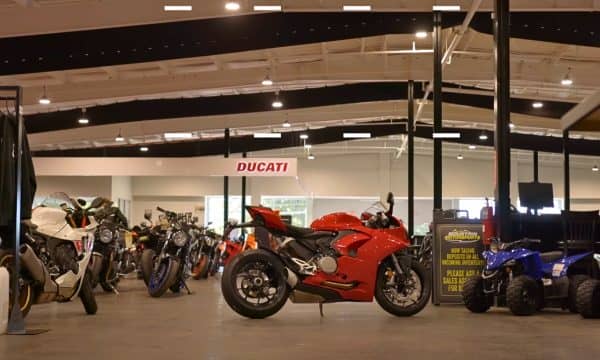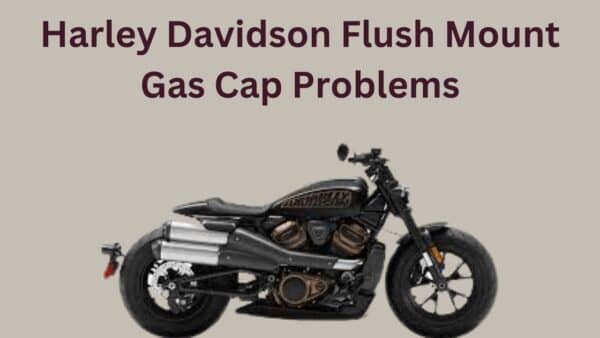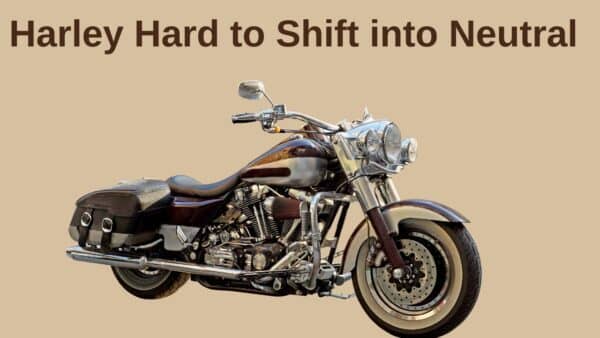The Ducati Panigale V2 is a dream bike for many motorcycle enthusiasts, known for its sleek design and powerful performance. However, like any high-performance machine, it isn’t without its issues.

In this guide, we’ll discuss some of the common problems that Panigale V2 riders might face and provide you with solutions.
Let’s begin!
Ducati Panigale V2 Problems
Ducati Panigale V2 problems are vacuum leak and valve wear, overheating issues, lighting system recall, fuel injector connection fault, exhaust heat damaging brake line, water pump clamp failures, headlight sensor repair advisory, importance of warranty coverage, and startup valve pressure anomalies.
1. Vacuum Leak and Valve Wear
This problem typically arises when there’s an improper seal within the engine’s intake system, which allows air to enter in places it shouldn’t.
This can interfere with the engine’s air-fuel mixture, potentially causing rough idling, power loss, or a less responsive throttle.
Vacuum leaks can be due to aging rubber hoses and gaskets that crack over time, or from loose connections.
On the other hand, valve wear is a natural occurrence as the bike ages, especially as it accumulates high mileage.
Poor maintenance can accelerate this wear, leading to inadequate valve clearance.
To resolve these issues, you should do a regular maintenance check. For vacuum leaks, you should inspect the vacuum hoses and replace any that are damaged.
As for valve wear, you’ve to clear and adjust the valve —a task generally best left to skilled mechanics or Ducati technicians.
2. Overheating Issues
This thrilling ride may offer an adrenaline-pumping experience, but when stuck in traffic or riding through the city during a hot day, the heat output from the engine can become uncomfortable.
The root of this overheating lies in the bike’s high-performance engine which generates substantial heat.
Its cooling system sometimes can’t dissipate that heat quickly enough during lower-speed, stop-and-go riding.
To resolve this you should upgrade your radiator with a higher capacity one or install radiator guards to enhance airflow.
It’s also advantageous to ensure the coolant is fresh and the cooling system is properly maintained.
3. Lighting System Recall
This problem, stemming from a manufacturing defect, led to the recall of certain models.
The issue centers around the headlight and taillight, which may fail to operate correctly due to faulty electronics.
As a result, visibility can be significantly reduced, posing a safety risk for riders and others on the road, especially at night or in low-light conditions.
Ducati addressed the problem by issuing a recall, urging owners of the affected models to bring their motorcycles to authorized dealerships.
At the dealership, the faulty components of the lighting system are replaced free of charge with properly functioning parts.
This solution will ensure the safety of riders by restoring full functionality to the motorcycle’s lighting.
4. Fuel Injector Connection Fault
The fuel injector is crucial for delivering the right amount of fuel to the engine.
If the connections are faulty, the engine may not receive enough fuel, which leads to a range of problems including reduced performance, stalling, or uneven running.
The root of this issue often lies in the electrical connectors or the fuel lines themselves.
Vibrations from the bike, environmental factors, or a manufacturing defect can lead to loose or damaged connectors or lines.
To solve this problem, you should check the integrity of the fuel injector connections. Also, tighten loose connectors or replace damaged parts.
For a persistent problem or if you’re not comfortable doing it yourself, it might be best to seek help from a qualified Ducati technician.
5. Exhaust Heat Damaging Brake Line
This heat can cause the brake fluid to overheat, which leads to a decrease in braking efficiency or, in some cases, brake failure.
The root cause of this problem lies in the design where the heat from the exhaust has insufficient dissipation.
This is particularly concerning during aggressive riding or in warmer climates where heat buildup is more significant.
To address this, you should consider installing a heat shield or thermal wrap around the exhaust to minimize the transfer of heat to the brake line.
Also, rerouting the brake line, if possible, or inspecting it regularly for any signs of heat damage can prevent the issue from escalating.
6. Water Pump Clamp Failures
These essential components secure the water pump hoses, which circulate coolant to manage the motorcycle’s engine temperature.
If these clamps fail, they can lead to coolant leaks. The leaks might cause the bike to overheat, leading to engine damage or causing you to be stranded.
The reasons for these failures can be the clamps not being adequately tightened during assembly or material degradation over time.
Related: Ducati Diavel 1260 Problems
Vibration and heat cycles can also cause the wear and tear of these components. So, you should include regular inspections and maintenance checks.
If you notice any signs of coolant under your bike or experience unexpected temperature rises, you should have your water pump clamps checked and replaced.
7. Headlight Sensor Repair Advisory
The sensor is responsible for detecting ambient light levels and automatically switching the headlights between low and high beams accordingly.
When this sensor malfunctions, you might find your headlights not adjusting to changing light conditions as they should.
The reasons for these malfunctions can vary, but they are often attributed to faulty sensors or wiring issues.
Exposure to the elements, vibrations from the road, and the natural wear and tear of riding can contribute to the sensor’s degradation over time.
To resolve this problem, you should have your headlight sensors checked regularly as part of your motorcycle’s maintenance routine.
If the sensor is found to be faulty, a qualified technician should replace it to ensure that the headlights function correctly.
8. Importance of Warranty Coverage
Due to the advanced components and sophisticated electronics used in these bikes, they may encounter unique problems, like mechanical wear and tear.
Having comprehensive warranty coverage ensures that if issues arise, you’re not left facing hefty repair costs.
This protection is a crucial investment in your peace of mind, as replacement parts for such premium models can be costly, and labor charges add up quickly.
A warranty acts as your financial shield against unforeseen defects or early failures.
9. Startup Valve Pressure Anomalies
This problem typically stems from irregularities in the valve system, where the valves may not open and close as they should due to incorrect pressure.
The cause can often be traced back to a need for valve clearance adjustment, a regular maintenance task on high-performance bikes like the Panigale V2.
To resolve this issue, you should have the motorcycle inspected by a qualified technician who can perform a thorough diagnostic to pinpoint the exact cause.
To solve the problem you should consider adjusting the valve clearances to the manufacturer’s specified settings.
Is Ducati Panigale V2 Reliable
The Ducati Panigale V2 is known for its high performance and Italian engineering, which often comes with a focus on design and speed.
While it is built for performance, users have reported that it is a reliable motorcycle when properly maintained and cared for.
Regular servicing and careful handling are key to keeping the Panigale V2 in good shape.
However, because it is a high-performance machine, maintenance might be more frequent and potentially costlier compared to less performance-oriented motorcycles.
Ducati Panigale V2 User Review
The Ducati Panigale V2 is a sportbike that continues to impress with its stunning looks, performance, and handling. Priced at $17,395, this visually stunning bike inherits its looks from the Panigale V4.
Powered by a high-revving 955cc Superquadro L-twin engine, it requires the rider to keep the engine spinning fast to fully enjoy its capabilities.
Equipped with an electronic quick-shifter for smooth gear changes, the Panigale V2 ensures you maintain speed and momentum.
Despite weighing 441 pounds with a full tank, this bike is praised for its sharp handling and responsiveness, especially in turns.
With Pirelli Diablo Rosso II tires and Showa BPF fork for the front suspension, it offers excellent performance in different riding conditions.
Ergonomically designed with a racing posture in mind, the Panigale V2 features comfortable seating and a comprehensive electronics package.
Adjustable power modes, traction control, wheelie control, and engine-brake control allow you to tailor the bike’s behaviour to your preferences.
Ducati Panigale V2 Technical Specifications
Here are the Ducati Panigale V2 technical specifications:
| Specification | 2 x 320 mm semi-floating discs, radially mounted Brembo Monobloc M4.32 4-piston callipers with EVO Cornering ABS |
| Engine | Superquadro: L-twin cylinder, 4 valves per cylinder, Desmodromic, liquid-cooled |
| Displacement | 955 cc |
| Power | 114 kW (155 hp) @ 10,750 rpm |
| Torque | 104 Nm (76.7 lb-ft) @ 9,000 rpm |
| Seat Height | 835 mm (32.9 in) |
| Dry Weight | 174.5 kg (385 lb) |
| Fuel Injection | Electronic fuel injection system. Twin injectors per cylinder. Full ride-by-wire elliptical throttle bodies |
| Exhaust | 2-1-2-1 system, with 2 catalytic converters and 2 lambda probes |
| Gearbox | Hydraulically controlled slipper and self-servo wet multi-plate clutch |
| Primary Drive | 6-speed with Ducati Quick Shift (DQS) up/down EVO 2 |
| Final Drive | Chain; Front sprocket 15; Rear sprocket 43 |
| Clutch | Riding Modes, Power Modes, Bosch Cornering ABS EVO, Ducati Traction Control (DTC) EVO 2, Ducati Wheelie Control (DWC) EVO, Engine Brake Control (EBC) EVO, Auto tire calibration |
| Front Suspension | Fully adjustable Showa BPF fork. 43 mm chromed inner tubes |
| Rear Suspension | Fully adjustable Sachs unit. Aluminum single-sided swingarm |
| Front Brake | 245 mm disc, 2-piston caliper with Cornering ABS EVO |
| Rear Brake | Riding Modes, Power Modes, Bosch Cornering ABS EVO, Ducati Traction Control (DTC) EVO 2, Ducati Wheelie Control (DWC) EVO, Engine Brake Control (EBC) EVO, Auto tire calibration |
| Instrumentation | Riding Modes, Power Modes, Bosch Cornering ABS EVO, Ducati Traction Control (DTC) EVO 2, Ducati Wheelie Control (DWC) EVO, Engine Brake Control (EBC) EVO, Auto tire calibration |
| Safety Equipment | Riding Modes, Power Modes, Bosch Cornering ABS EVO, Ducati Traction Control (DTC) EVO 2, Ducati Wheelie Control (DWC) EVO, Engine Brake Control (EBC) EVO, Auto tyre calibration |
| Standard Equipment | Ducati Quick Shift (DQS) up/down EVO 2, Full LED lighting with Daytime Running Light (DRL), Sachs steering damper, Auto-off indicators |
| Warranty | 24 months unlimited mileage |
| Maintenance | 12,000 km (7,500 m)/12 months |
| Valve Clearance Adjustment | Interval not specified in the provided content |

Ahtsham Younas is a passionate blogger and content writer. He loves to ride motorcycles and learn the mechanical process behind the motorcycles.
He has been writing articles in the motorcycle industry since 2019 and has learned many things about motorbike niches.


